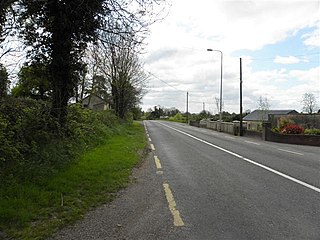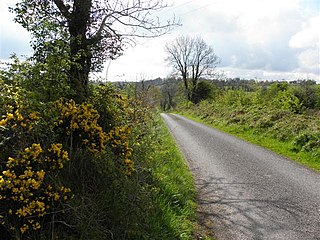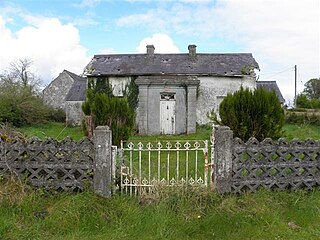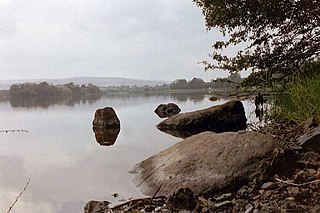| |||||
| Centuries: | |||||
|---|---|---|---|---|---|
| Decades: | |||||
| See also: | Other events of 1610 List of years in Ireland | ||||
Events from the year 1610 in Ireland.
| |||||
| Centuries: | |||||
|---|---|---|---|---|---|
| Decades: | |||||
| See also: | Other events of 1610 List of years in Ireland | ||||
Events from the year 1610 in Ireland.

County Cavan is a county in Ireland. It is in the province of Ulster and is part of the Northern and Western Region. It is named after the town of Cavan and is based on the historic Gaelic territory of East Breffny (Bréifne). Cavan County Council is the local authority for the county, which had a population of 81,201 at the 2022 census.

Cavan is the county town of County Cavan in Ireland. The town lies in Ulster, near the border with County Fermanagh in Northern Ireland. The town is bypassed by the main N3 road that links Dublin with Enniskillen, Ballyshannon and Donegal Town.

Belturbet is a town in County Cavan, Ireland. It lies on the N3 road, around 14 km (8.7 mi) north of Cavan town and 123 km (76 mi) from Dublin. It is also located around 4 km (2.5 mi) south of the border with County Fermanagh, part of Northern Ireland, and is 36 km (22 mi) from Enniskillen.
Events from the year 1607 in Ireland.
Events from the year 1656 in Ireland.

Cavanagh is a townland in the civil parish of Tomregan, County Cavan, Ireland. It lies within the former barony of Tullyhaw.
Gortahurk, is a townland in the civil parish of Tomregan, County Fermanagh, Northern Ireland. It was also part of the barony of Knockninny.

Gortmullan, or Gortmullen, is a townland in the Civil Parish of Tomregan, Barony of Knockninny, County Fermanagh, Northern Ireland.
Knockateggal is a townland in the Civil Parish of Tomregan, Barony of Knockninny, County Fermanagh, Northern Ireland.
The High Sheriff of Cavan was the British Crown's judicial representative in County Cavan, Ireland from the 16th century until 1922, when the office was abolished in the new Free State and replaced by the office of Cavan County Sheriff. The sheriff had judicial, electoral, ceremonial and administrative functions and executed High Court Writs. In 1908, an Order in Council made the Lord-Lieutenant the Sovereign's prime representative in a county and reduced the High Sheriff's precedence. However the sheriff retained his responsibilities for the preservation of law and order in the county. The usual procedure for appointing the sheriff from 1660 onwards was that three persons were nominated at the beginning of each year from the county and the Lord Lieutenant then appointed one of the nominees as his choice of High Sheriff for the remainder of the year. Often the other nominees were appointed as under-sheriffs. Sometimes a sheriff did not fulfil his entire term through death or other event and another sheriff was then appointed for the remainder of the year. The dates given hereunder are the dates of appointment. All addresses are in County Cavan unless stated otherwise.

Clonkeen is a townland in the civil parish of Kildallan, barony of Tullyhunco, County Cavan, Ireland.

Killygreagh is a townland in the civil parish of Kildallan, barony of Tullyhunco, County Cavan, Ireland.
Listiernan is a townland in the civil parish of Kildallan, barony of Tullyhunco, County Cavan, Ireland.

Carn is a townland in the civil parish of Kildallan, barony of Tullyhunco, County Cavan, Ireland.

Aghabane is a townland in the civil parish of Kildallan, barony of Tullyhunco, County Cavan, Ireland.
Ned is a townland in the civil parish of Killeshandra, barony of Tullyhunco, County Cavan, Ireland.

Ardue is a townland in the civil parish of Drumlane, Barony of Loughtee Lower, County Cavan, Ireland.

Killywilly is a townland in the civil parish of Drumlane, Barony of Loughtee Lower, County Cavan, Ireland.

Ballyhugh is a townland in the civil parish of Drumlane, Barony of Loughtee Lower, County Cavan, Ireland.